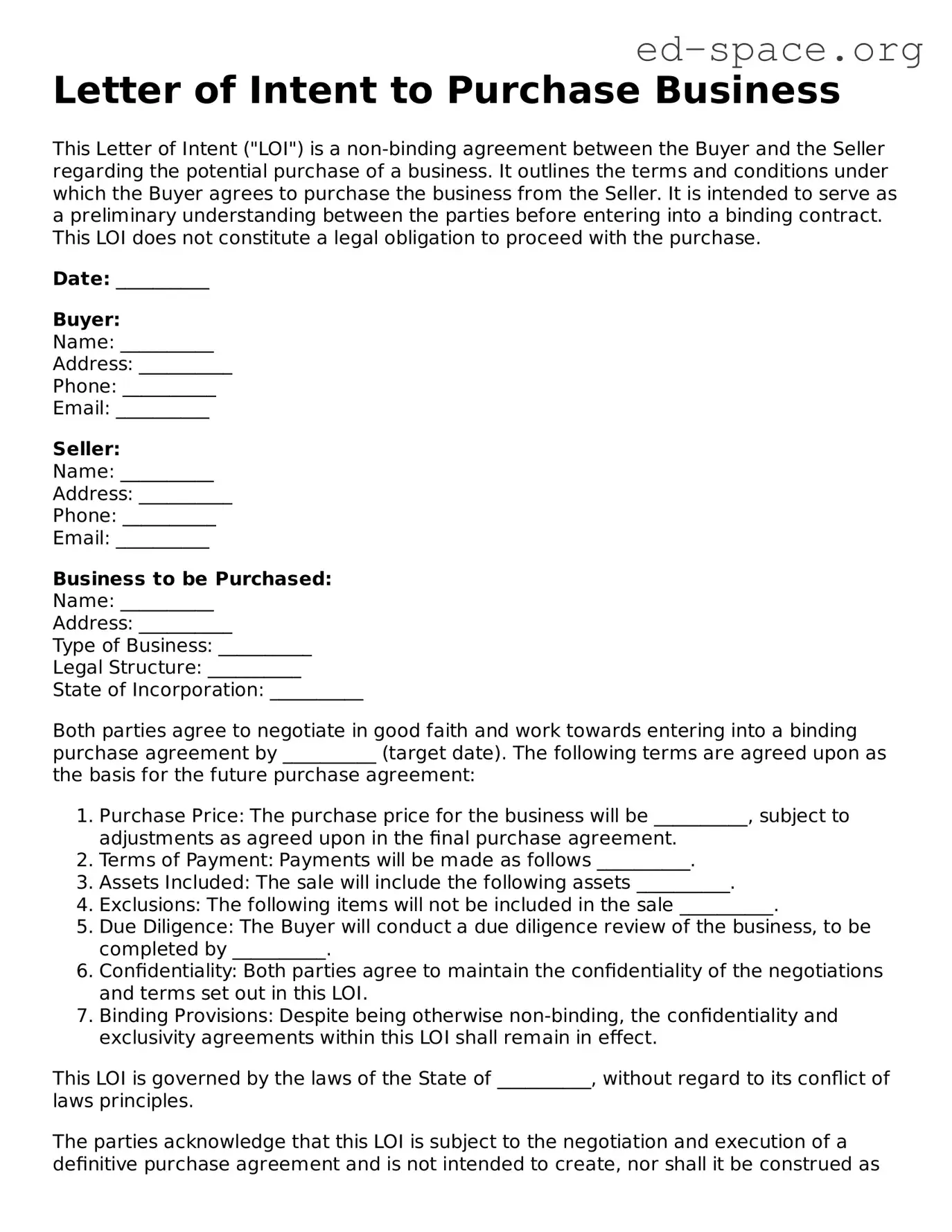Letter of Intent to Purchase Business
This Letter of Intent ("LOI") is a non-binding agreement between the Buyer and the Seller regarding the potential purchase of a business. It outlines the terms and conditions under which the Buyer agrees to purchase the business from the Seller. It is intended to serve as a preliminary understanding between the parties before entering into a binding contract. This LOI does not constitute a legal obligation to proceed with the purchase.
Date: __________
Buyer:
Name: __________
Address: __________
Phone: __________
Email: __________
Seller:
Name: __________
Address: __________
Phone: __________
Email: __________
Business to be Purchased:
Name: __________
Address: __________
Type of Business: __________
Legal Structure: __________
State of Incorporation: __________
Both parties agree to negotiate in good faith and work towards entering into a binding purchase agreement by __________ (target date). The following terms are agreed upon as the basis for the future purchase agreement:
- Purchase Price: The purchase price for the business will be __________, subject to adjustments as agreed upon in the final purchase agreement.
- Terms of Payment: Payments will be made as follows __________.
- Assets Included: The sale will include the following assets __________.
- Exclusions: The following items will not be included in the sale __________.
- Due Diligence: The Buyer will conduct a due diligence review of the business, to be completed by __________.
- Confidentiality: Both parties agree to maintain the confidentiality of the negotiations and terms set out in this LOI.
- Binding Provisions: Despite being otherwise non-binding, the confidentiality and exclusivity agreements within this LOI shall remain in effect.
This LOI is governed by the laws of the State of __________, without regard to its conflict of laws principles.
The parties acknowledge that this LOI is subject to the negotiation and execution of a definitive purchase agreement and is not intended to create, nor shall it be construed as creating, any binding obligation on either party, except for the confidentiality and exclusivity agreements mentioned herein.
By signing below, the Buyer and Seller agree to the terms outlined in this Letter of Intent.
Buyer's Signature: __________
Date: __________
Seller's Signature: __________
Date: __________
This Letter of Intent is the first step towards a new beginning. It reflects the intent to proceed based on mutual trust and understanding, paving the way for a successful partnership and transaction.
